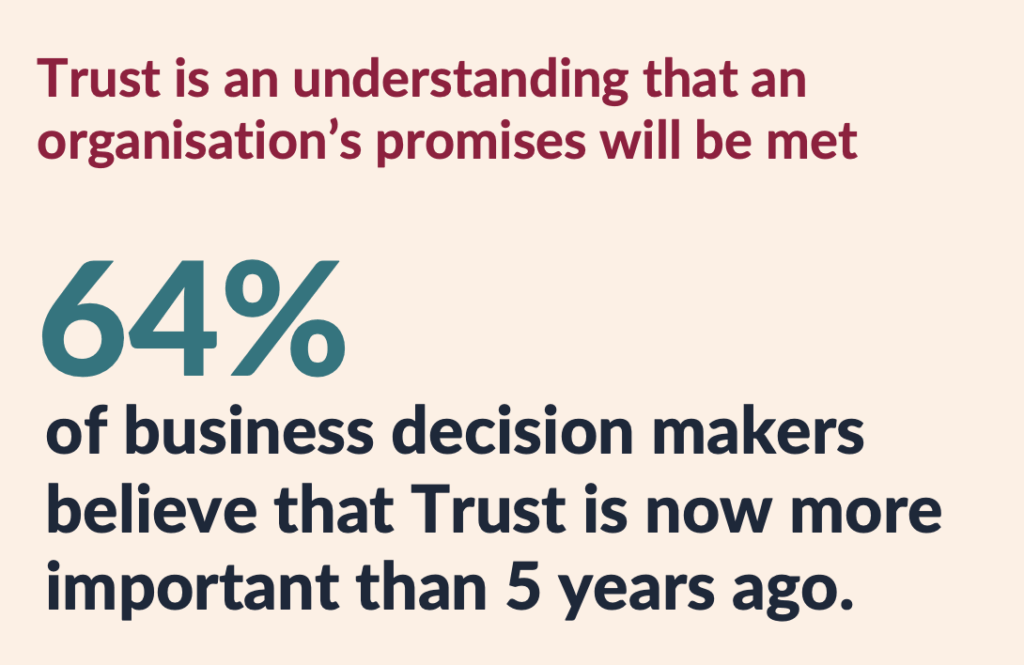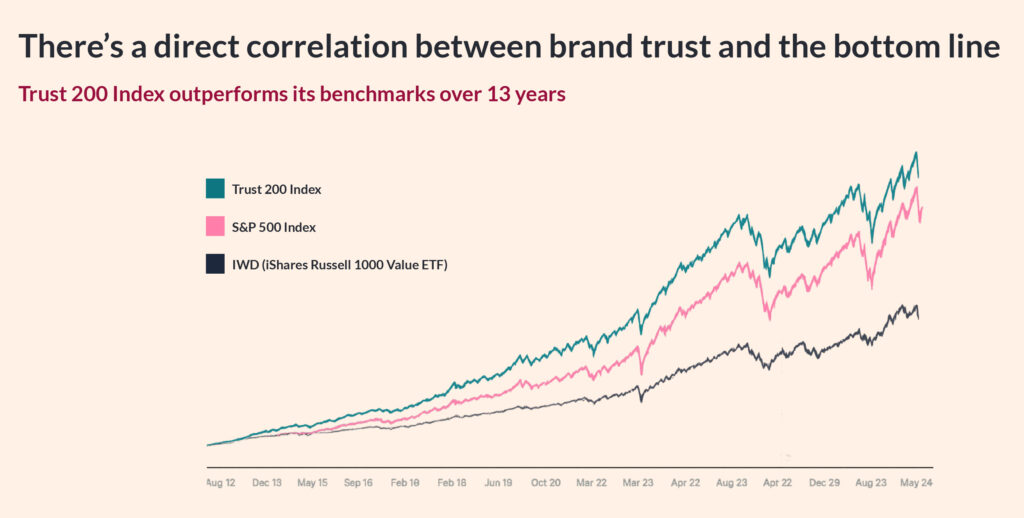
Trust is no longer a brand value. It’s a business strategy.
In an age of misinformation and institutional erosion, trust has become the most valuable currency a brand can hold. For brand, marketing and communications leaders, trust is no longer a reputational consequence. It is a strategic decision – one that influences everything from customer loyalty to competitive edge. And one that demands the full attention of leadership at the highest level.
New research from the Financial Times and the IPA, based on responses from more than 750 global business leaders, reveals the scale of the shift: 64% say trust matters more today than it did five years ago. Yet most organisations are not equipped to manage it with the same discipline they apply to growth or innovation. Only 22% treat trust as a board-level metric. This gap represents both a business risk and a powerful opportunity for those prepared to act.

Source: FT x IPA: Bridging the Trust Gap 2025
Actions earn trust, stories sustain it
We are witnessing a fundamental shift in how trust is built. It starts not with what a business claims to stand for, but with how it behaves. In 2025 alone, the most frequent media associations with trust have been overwhelmingly negative. Topics such as DEI rollbacks, greenwashing, executive misconduct and misinformation dominate the conversation.
Even so, this shift does not render brand storytelling irrelevant. When executed with integrity, storytelling remains essential. If a narrative is backed by evidence, and if thought leadership reflects actual business practice, it becomes a powerful vehicle for building credibility.
The challenge for today’s leaders is not just crafting messages. It is ensuring that those messages reflect real, observable action. Something only good thought leadership is capable of.
Today’s customers, employees and stakeholders (in other words, all of us) are savvy enough to discern the difference between a brand that speaks and acts from an authentic set of values, and a campaign parading as a brand’s identity. And if there’s one thing that proved just how far this chasm has widened, it was the number of brands that rolled back on their DEI efforts in early 2025 as a direct response to the Trump Government’s mandates.
Marketing leaders be warned: now is the time to focus on building brand trust through what people experience, not only through what they see, hear and consume.
Trust creates commercial value, but only if it is taken seriously
The data is clear. Trust enhances customer loyalty, improves employee retention, increases pricing power and drives innovation. Over the past 13 years, the Trust 200 Index has outperformed major financial benchmarks. This is not a coincidence. Organisations that prioritise consistency, ethics and transparency are now seeing those values translate directly into performance.

Source: ‘Trust Across America’ initiative
Still, too many companies treat trust as an intangible concept. According to the FT and IPA study, only 49% of business decision makers said their company is currently measuring trust. Yet, as one business decision maker put it, “Trust is now the second most powerful metric, after product or service quality, in delivery of business results”.
Like any key business indicator, trust needs to be tracked, benchmarked and embedded across functions. Brand and communications leaders have a central role to play in making that happen.
AI is redrawing the boundaries – and necessity – of brand trust
The rise of artificial intelligence is rapidly changing how trust is won and lost. According to the research, 92% of people say that a company’s misuse of AI would have a profound effect on their level of trust with that company. More than half say they do not trust content generated by machines.
Figures like these go a long way to highlighting the different levels of trust placed in humans versus machines. This does not mean AI should be avoided. But it does mean expectations are shifting. The public is less tolerant of ethical shortcuts and more aware of the potential for misuse.
Brand and communications leaders must consider the role that credible and authentic brand connections play in building and retaining trust – and how quickly those can be eroded in the face of technology-enabled actions deemed to be unsecure, unethical, irresponsible or opaque. Think, for example, about how many brand-associated data breaches, chatbot fiascos and/or AI mishaps you can name from the past few years. I bet these are far easier to recall than the names of brands you would count as trustworthy.
The upshot of all this? As digital interactions become harder to verify and synthetic content more sophisticated, trust in human intent becomes the new benchmark – and brands must work harder to ensure that intent translates across all touch points.
The trust agenda is yours to lead
Public confidence in institutions is weakening, and people are increasingly looking to brands to offer stability, transparency and direction. This is no longer just a communications issue. It is a strategic mandate.
Trust is not something that can be won through campaigns alone. It must be built through consistent decisions, visible accountability and long-term alignment between values and actions. As expectations grow, brand and thought leaders are becoming the guardians of reputation — and of resilience.
At the Financial Times, trust is the foundation of our brand. We have earned it through decades of independent journalism and high standards. We now work with organisations that share that ambition. If you are ready to treat trust as your most strategic asset, we are ready to help you lead with it.






 Back
Back

 Book a meeting
Book a meeting
 Book a meeting
Book a meeting


 View Megan’s profile
View Megan’s profile





